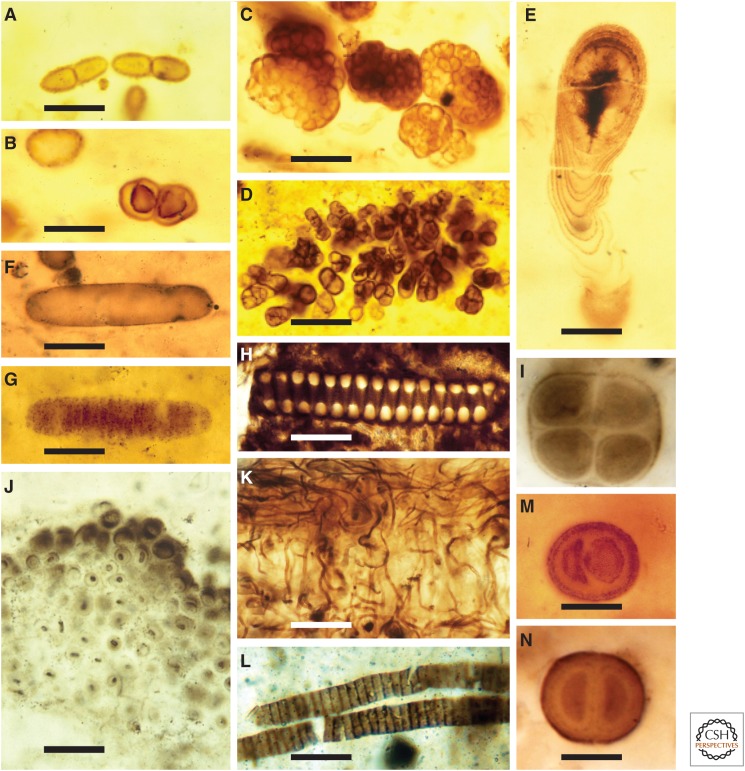Figure 1.
Proterozoic fossils interpreted as cyanobacteria. (A–C) Coccoidal microfossils, some showing evidence of binary fission, 750- to 800-million-year-old (Ma) Draken Formation, Spitsbergen. (D) Hyella-like endolithic microfossil penetrating an ooid, 750 to 800 Ma Upper Eleonore Bay Group, Greenland; upper surface of ooid arcs just above the fossil. (E) Cyanostylon-like stalk-forming cyanobacterium, Draken Formation. (F,G) Interpreted akinete and associated germling-like short trichome, ca. 1500 Ma Kotuikan Formation, Siberia. (H) Phosphatized helical Spirulina-like filament, basal Cambrian, Siberia. (I) Gloeocapsa-like cell quartet, 1100 to 1200 Ma Angmaat Formation, Baffin Island. (J) Entophysalis-like mat-building cyanobacteria, ca. 2000 Ma Belcher Supergroup, Hudson Bay, Canada. (K) Silicified population of mat-building filaments, showing alternating vertical and horizontal filament orientations, 750- to 800 Ma Backlundtoppen Formation, Spitsbergen. (M,N) Chroococcus-like dyads from the Bitter Springs (M) and Angmaat (N) formations. Scale bars, 10 µm (A–C,E,M,N); 75 µm (D); 15 µm (F,G); 20 µm (H,J,L); 25 µm (K).

